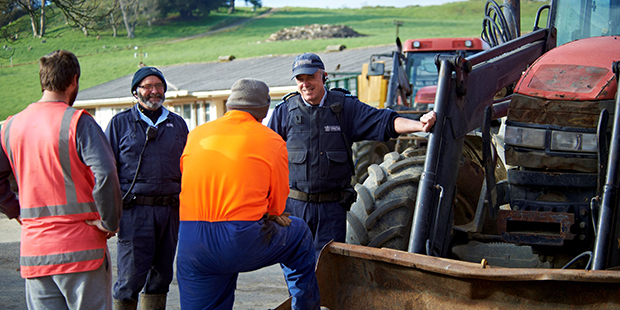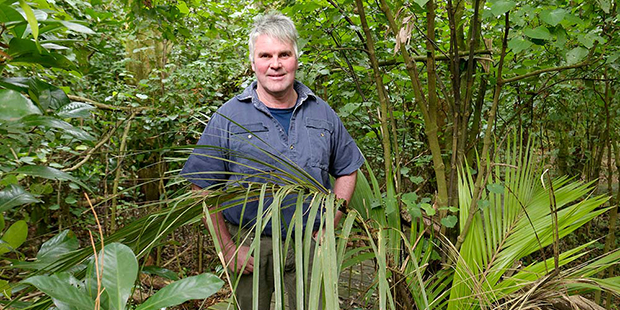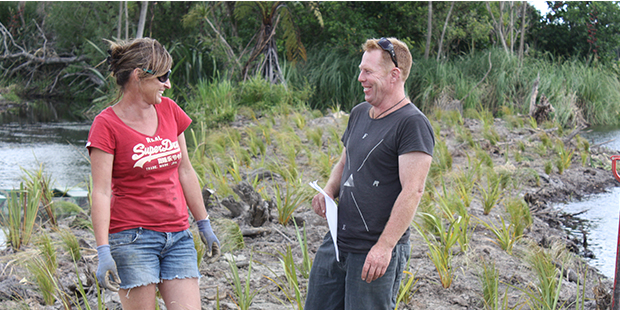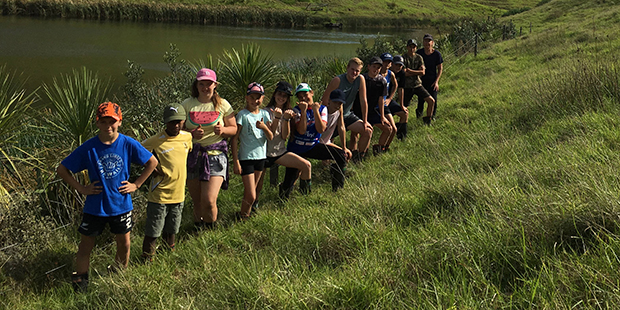Bringing mana to Manawatu
After 10 years of hard work, the Manawatu River's "shocking" water quality is on the way up.


A couple of months of Covid-19 lockdown won’t be enough to undo years of collective work on improving water quality in the Manawatu catchment.
While the lockdown brought a halt to some water quality-enhancing activity for a while, this year marks 10 years since the Manawatu River Leaders’ Accord was signed and – while there is still much to be done – the awa (river) is in good heart.
In late 2009, after research by the Cawthron Institute, the Manawatu River was declared one of the most polluted in the Western world, fouled by treated sewage, industrial waste and farm run-off.
Later investigation diluted that claim a little – but Richard Thompson, independent chair of the Manawatu River Leaders’ Forum, says the announcement of the shocking state of the river ignited public debate and led to major steps being taken to clean it up.
“There was a lot of negative publicity about the state of the river at that time, some of it not strictly correct,” Thompson says. “After a lot of concern in the community and conversation around the fact the river was polluted, and how badly, a number of people decided to do something about it.”

A sunny day at Hardie Street Reserve, Manawatu riverside shared pathway. Photo / Supplied
A sunny day at Hardie Street Reserve, Manawatu riverside shared pathway. Photo / Supplied
The Horizons Regional Council called iwi, local government, farming, industry and community groups together, and the Manawatu River Leaders’ Forum was formed. Because the river is so long — around 180 km, with its headwaters near Norsewood in the Tararua district, meeting the sea at Foxton Beach, southwest of Palmerston North — there were many interested parties.
In 2010, the Manawatu River Leaders’ Accord was signed, a joint commitment to improving water quality and restoring the mana of the river. It is based around the whakatauki ‘Kei te ora te wai, kei te ora te whenua, kei te ora te tangata.’ (If the water is healthy, the land and the people are nourished.)
Thompson says the most significant improvement to water quality in the 10 years since the accord was signed has been due to work on wastewater treatment plants along the course of the river.
“There are a whole bunch of them and some were discharging fairly poor quality wastewater,” Thompson says. “An enormous amount of money has been spent on improving these plants and there have been some significant local gains in water quality as a result, in terms of both clarity and nutrients.”
But as well as this major investment in infrastructure, the accord has seen many smaller-scale, local projects undertaken, including significant riparian planting and fencing. In the past decade, 57 community projects have been supported, more than two million plants have been planted and more than 800km of waterways have been fenced to keep stock out.

Planting at Ngāmoko - Norsewood near the source of the Manawatū River. Photo / Supplied
Planting at Ngāmoko - Norsewood near the source of the Manawatū River. Photo / Supplied
A recent project supported through the accord has been the Urban Eels partnership, which aims to create an improved environment and viewing area for tuna (eels) where the Turitea stream meets the river at Palmerston North.
“Local iwi have been very disturbed about loss of habitat and the impact on the tuna resource,” Thompson says. “It also gives urban people in Palmerston North something to focus on and something tangible to look at in terms of the river’s health – and it’s a really important partnership with iwi.”
Looking to the future, Thompson says there is still more work to do on wastewater and reducing discharges into the river. While a high proportion of dairy farms have been fenced, other parts of the primary sector are only just facing these challenges, particularly in large areas with very small streams.
Work is also planned on minimising fish barriers, such as culverts and driveways which impede the free movement of freshwater fish, as well as supporting other community projects around improving water quality.
Fortunately, so far the disruption of Covid-19 hasn’t had a big effect on river-improvement activities, with planting and fencing work continuing on private land during the lockdown, with community planting over winter likely to take place as restrictions are eased.
Another major aim of the accord is to restore the mana of the river in the eyes of the people who live and work along it.

Ngamoko Whare near the source of the Manawatū River. Photo / Supplied
Ngamoko Whare near the source of the Manawatū River. Photo / Supplied
“This is one of the key goals of the accord, because we realised that a lot of people felt quite bad about the river — they were aware that it was polluted and felt a sense of shame that our river was not well and that we let it get like this,” Thompson says.
Having less tangible goals such as this alongside scientifically measurable indicators of improved water quality “might seem a bit touchy-feely, but it’s really important because, to undertake a project like this, you need to engage a whole body of people – and people respond to the river in different ways.
“We need to make sure we’re connecting with people and helping them build their relationship with the river and what is happening to it.”





